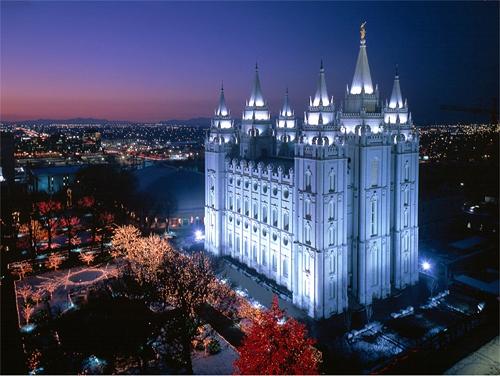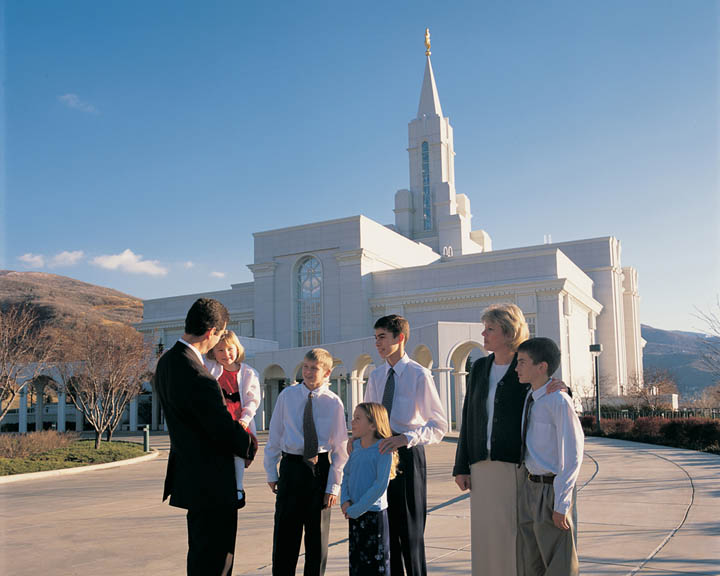The dictionary tells us that an endowment is a gift. For members of the Mormon Church (The Church of Jesus Christ of Latter-day Saints), the temple endowment has a special and sacred meaning. The endowment is a sacred ordinance, or ritual of instruction about the purpose of life, performed in Mormon temples. Although endowments are only given to prepared adult members of the Church, they have an impact on families and communities throughout the world. Blessings of healing, power, and strength flow through those who enter the House of the Lord and keep covenants made in the endowment service.
What is an endowment? The New Testament speaks of “endowing.” After Christ’s resurrection, He told his apostles that they must stay in Jerusalem until they were “endued with power from on high” (Luke 24:49). The fulfillment of that commandment is presented in Acts 2, on the day of Pentecost. The Apostles were given power from on high when the Holy Ghost manifested Himself in great glory—and gave both strength and the power of revelation to Christ’s disciples.
The same power from on high is available to modern Saints who enter the temple to receive their own endowments and to act as proxy to receive an endowment on behalf of their deceased ancestors. They leave the temple with an increase in strength, power, vision, ability, and knowledge from on high.
Since Mormons claim that The Church of Jesus Christ of Latter-day Saints is literally the restoration of the original Church that Christ set up upon the earth, they include the building of temples, and the ordinances therein as part of that restoration. The endowment reviews the story of creation, our position in mortality, the purpose of the atonement, and the nature of man and woman’s connection with God. It is essential preparation for Mormon missionaries and those about to be married. The blessings it offers are full and real. From temple worship comes the fulness of the blessings of the Gospel of Jesus Christ.
There are four parts to an endowment. First, the participants prepare—they are symbolically washed and anointed, then dressed in temple garments (these are often, and somewhat disrespectfully, called Mormon underwear) and temple robes. The color of both robes and garments is white, to symbolize purity and the equality between all the participants. The next part is a course of instruction. During this course, the participants will learn about the creation of the world, further detail about the experiences of Adam and Eve, and the plan of salvation that God has put forth for us, which the Atonement of Christ made possible.
 The third part consists of covenant-making unto the Lord, promising obedience, unselfishness, chastity, and loyalty to the building up of His kingdom on earth. The Lord makes promises in return—those of joy, protection, progress, and an eventual return to Him. In the fourth part, the Lord’s hand and presence is felt inside the temple—the participants have time to ponder and pray in the Celestial Room of the temple. The Mormon temple is a house of light, peace, revelation, and understanding.
The third part consists of covenant-making unto the Lord, promising obedience, unselfishness, chastity, and loyalty to the building up of His kingdom on earth. The Lord makes promises in return—those of joy, protection, progress, and an eventual return to Him. In the fourth part, the Lord’s hand and presence is felt inside the temple—the participants have time to ponder and pray in the Celestial Room of the temple. The Mormon temple is a house of light, peace, revelation, and understanding.
Mormons may participate in the endowment multiple times and are encouraged to do so. After the first time, they receive the endowment, not for themselves, but on behalf of the dead. Mormons are very concerned with giving the departed every opportunity possible to accept knowledge and ordinances they didn’t receive in life. As with all ordinances that Mormons perform by proxy, though, the deceased has the choice to accept the endowment or not. These choices are made by the dead who dwell in the Spirit World, awaiting resurrection.
The symbolism of the endowment is very deep, and members believe that every time they participate in an endowment ceremony, they understand more of the knowledge which God has given unto them. The symbolism is also very sacred, however, and the faithful Mormon will not share it outside of the temple.

